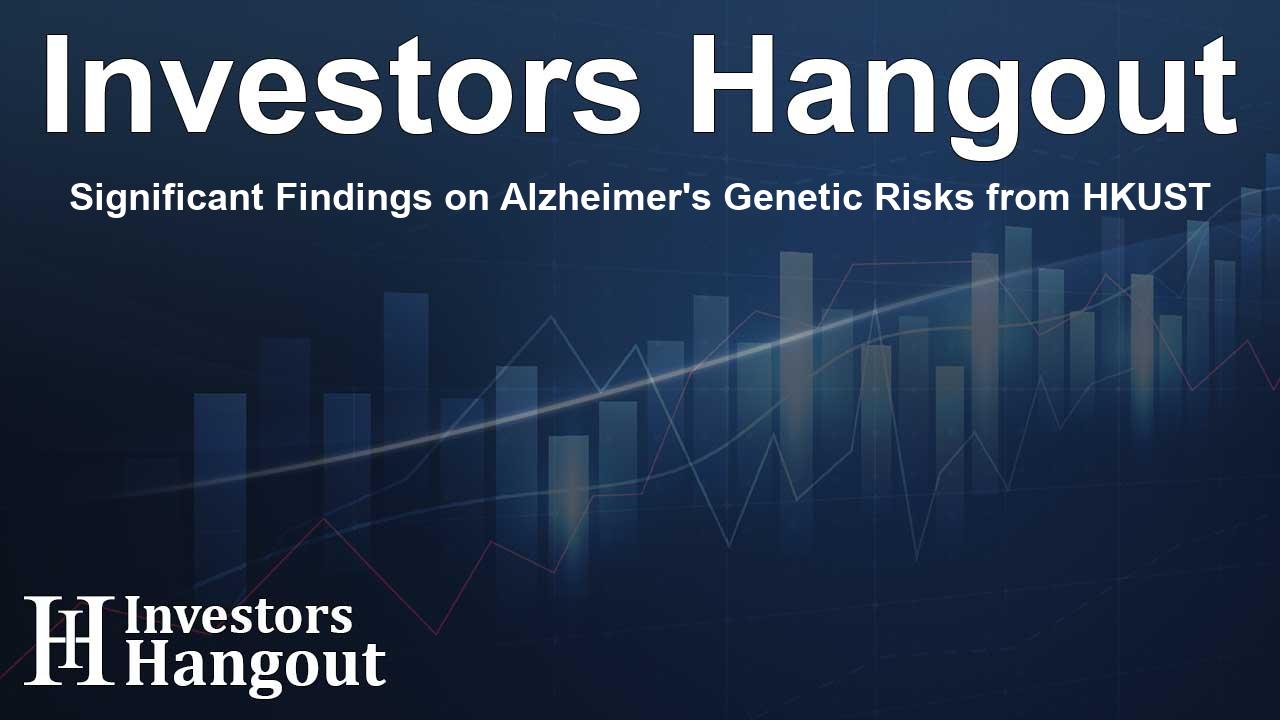Significant Findings on Alzheimer's Genetic Risks from HKUST

Critical Insights into Alzheimer's from Recent Research
In a groundbreaking study by The Hong Kong University of Science and Technology (HKUST), it has been revealed that the TREM2 H157Y genetic variant significantly elevates the risk of Alzheimer's disease (AD) for individuals of ethnic Chinese descent. Notably, this variant presents risk levels akin to the well-known APOE-?4 genetic factor, indicating a profound importance in understanding AD's progression and variation in different populations.
Understanding the TREM2 H157Y Variant
This variant, identified in the study, is found in approximately 1 in 200 ethnic Chinese individuals diagnosed with Alzheimer's. The research indicates that those carrying this variant experience faster clinical progression of the disease, alongside more pronounced neurodegeneration. These findings contribute greatly to the clinical landscape of Alzheimer's management through tailored monitoring and intervention strategies.
Highlighted Research Findings
The study elaborated several crucial findings regarding the TREM2 H157Y variant:
- This variant correlates with an increased risk of developing AD.
- Individuals with the TREM2 H157Y variant show quicker disease advancement.
- Patients demonstrate more severe outcomes of AD.
- Alterations in blood protein biomarkers among variant carriers suggest distinct biological mechanisms, valuable for monitoring disease progression.
Implications for Alzheimer's Disease in the Chinese Population
Current data suggests around 10 million cases of AD exist in Mainland China, with projections estimating the figure could reach 50 million by 2050. Genetic contributions account for a significant portion of AD risk, typically between 60 to 80%. This research indicates critical differences in how genetic factors affect various ethnic groups, asserting that understanding these differences is essential for developing effective treatments.
HKCeND Biobank: A Resource for Ongoing Research
To further delve into the genetic landscape of AD, the Hong Kong Center for Neurodegenerative Diseases (HKCeND) established the HKCeND Biobank. This biobank functions as a vital resource by gathering extensive clinical, neuroimaging, and omics data from individuals of Chinese ancestry, thus facilitating deeper investigations into genetic factors like TREM2 H157Y.
Challenges and Collaborative Efforts
Led by Professor Nancy IP, a prominent figure in the study, the research has positioned itself to provide novel insights into AD. Her leadership at HKUST and the SKLNSD has stimulated vital discussions surrounding the genetic factors influencing disease pathology. The collaboration with Prof. Timothy Kwok from Prince of Wales Hospital enhances the research’s breadth and applied significance.
The study's findings revealed that AD patients who are TREM2 H157Y carriers and also possess the APOE-?4 risk factor might face accelerated progression during the disease's initial stages. Moreover, cognitive tests and blood biomarker evaluations highlight that this population faces significant cognitive decline and neurodegeneration.
Future Directions: Potential for Personalized Medicine
As researchers continue to examine the biological implications of genetic risk factors like TREM2 H157Y, there is a growing emphasis on how these insights may inform personalized therapeutic strategies. Prof. IP has articulated the need for continual public engagement and collaborative efforts between clinicians and researchers to translate scientific discoveries into practical patient benefits.
Conclusion
The research spearheaded by HKUST significantly advances our grasp of Alzheimer's disease, particularly regarding its genetic foundations in diverse populations. By focusing on ethnic Chinese groups and understanding the implications of the TREM2 H157Y variant, the study underscores the necessity of inclusive genetic research in combating neurodegenerative diseases effectively.
Frequently Asked Questions
What is the TREM2 H157Y genetic variant?
The TREM2 H157Y variant is a genetic factor that increases the risk of Alzheimer's disease, particularly in individuals of ethnic Chinese descent.
How does the TREM2 H157Y variant affect Alzheimer's disease progression?
Research indicates that individuals with this variant experience faster clinical progression and more severe neurodegenerative symptoms compared to those without it.
What implications do the findings have for Alzheimer's treatment?
The findings may inform personalized treatment strategies and enhance monitoring of disease progression for affected individuals.
How prevalent is the TREM2 H157Y variant?
Approximately 1 in 200 ethnic Chinese individuals with Alzheimer’s disease carry the TREM2 H157Y variant.
What role does the HKCeND Biobank play in Alzheimer’s research?
The HKCeND Biobank collects comprehensive data to facilitate ongoing research, particularly focusing on genetic factors influencing Alzheimer’s in ethnic Chinese populations.
About The Author
Contact Henry Turner privately here. Or send an email with ATTN: Henry Turner as the subject to contact@investorshangout.com.
About Investors Hangout
Investors Hangout is a leading online stock forum for financial discussion and learning, offering a wide range of free tools and resources. It draws in traders of all levels, who exchange market knowledge, investigate trading tactics, and keep an eye on industry developments in real time. Featuring financial articles, stock message boards, quotes, charts, company profiles, and live news updates. Through cooperative learning and a wealth of informational resources, it helps users from novices creating their first portfolios to experts honing their techniques. Join Investors Hangout today: https://investorshangout.com/
The content of this article is based on factual, publicly available information and does not represent legal, financial, or investment advice. Investors Hangout does not offer financial advice, and the author is not a licensed financial advisor. Consult a qualified advisor before making any financial or investment decisions based on this article. This article should not be considered advice to purchase, sell, or hold any securities or other investments. If any of the material provided here is inaccurate, please contact us for corrections.
